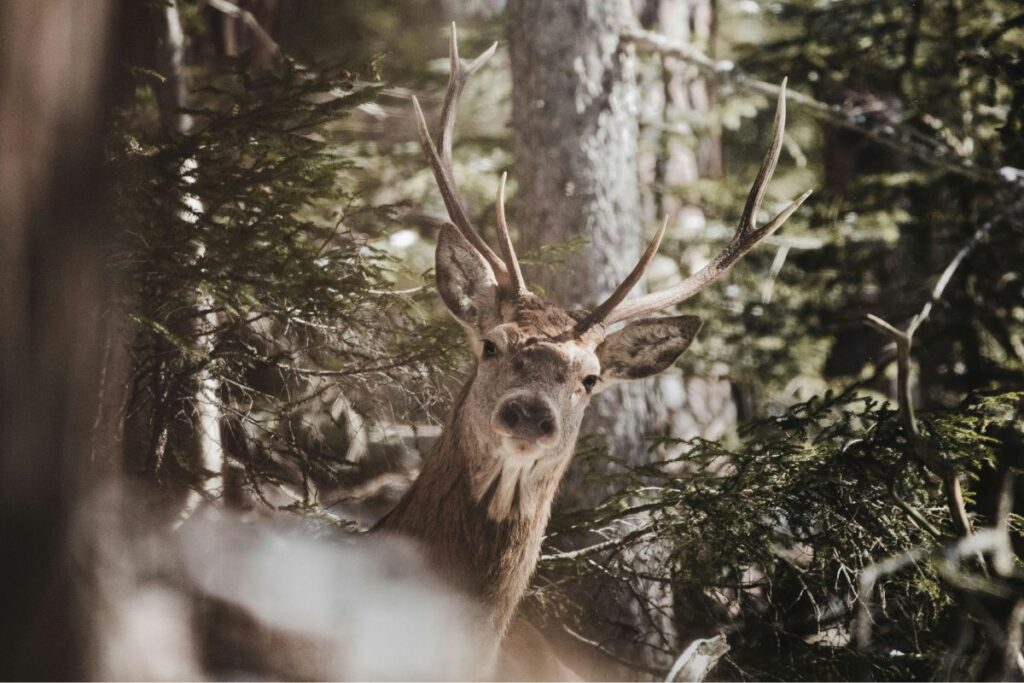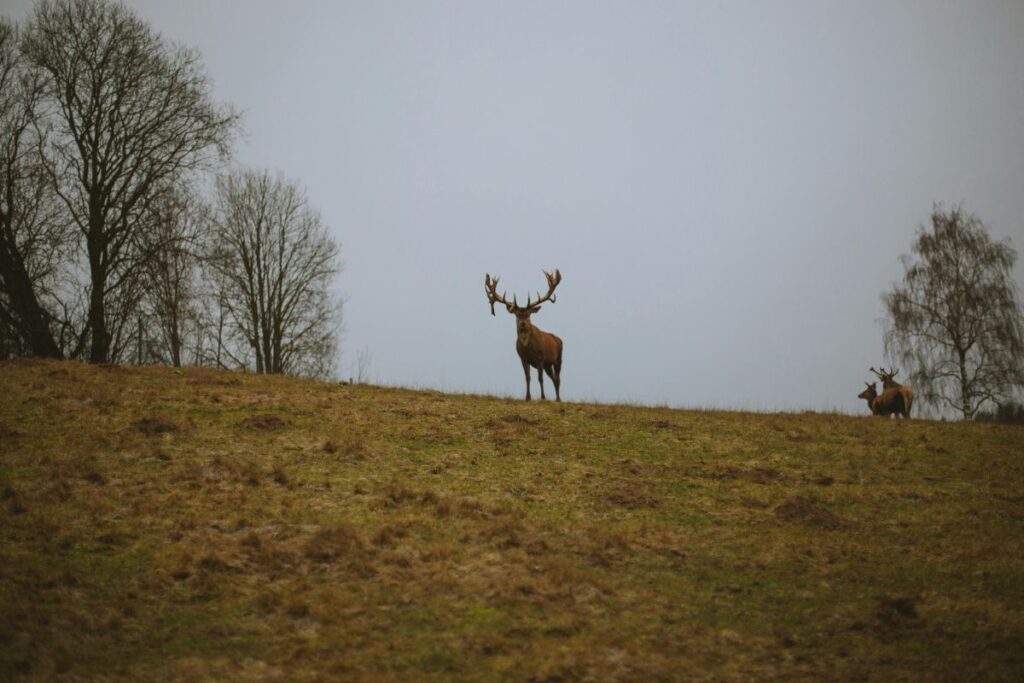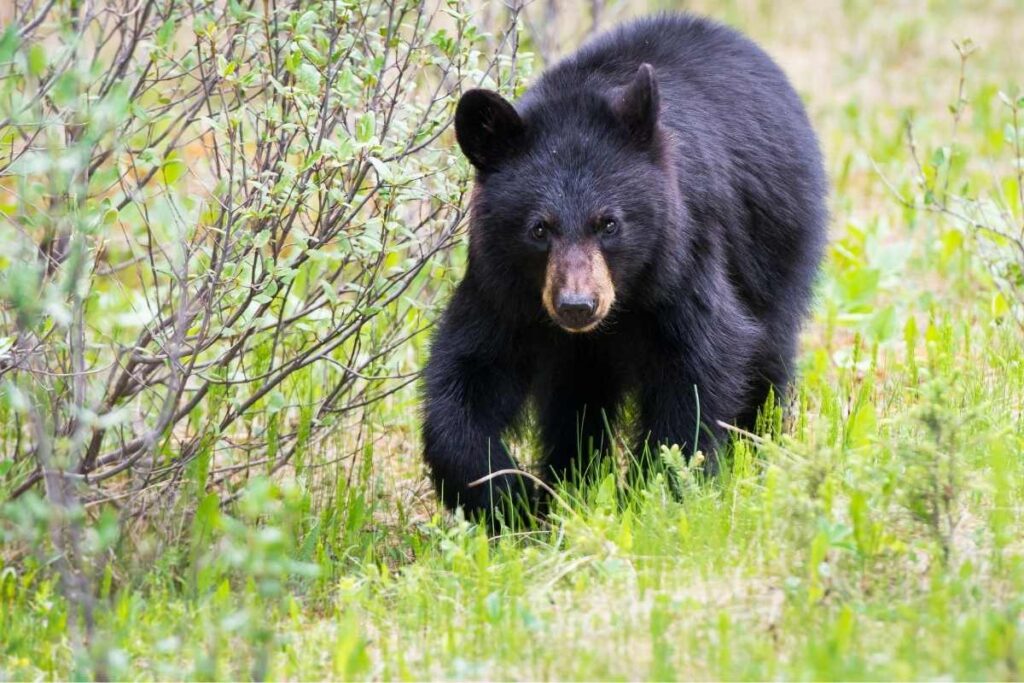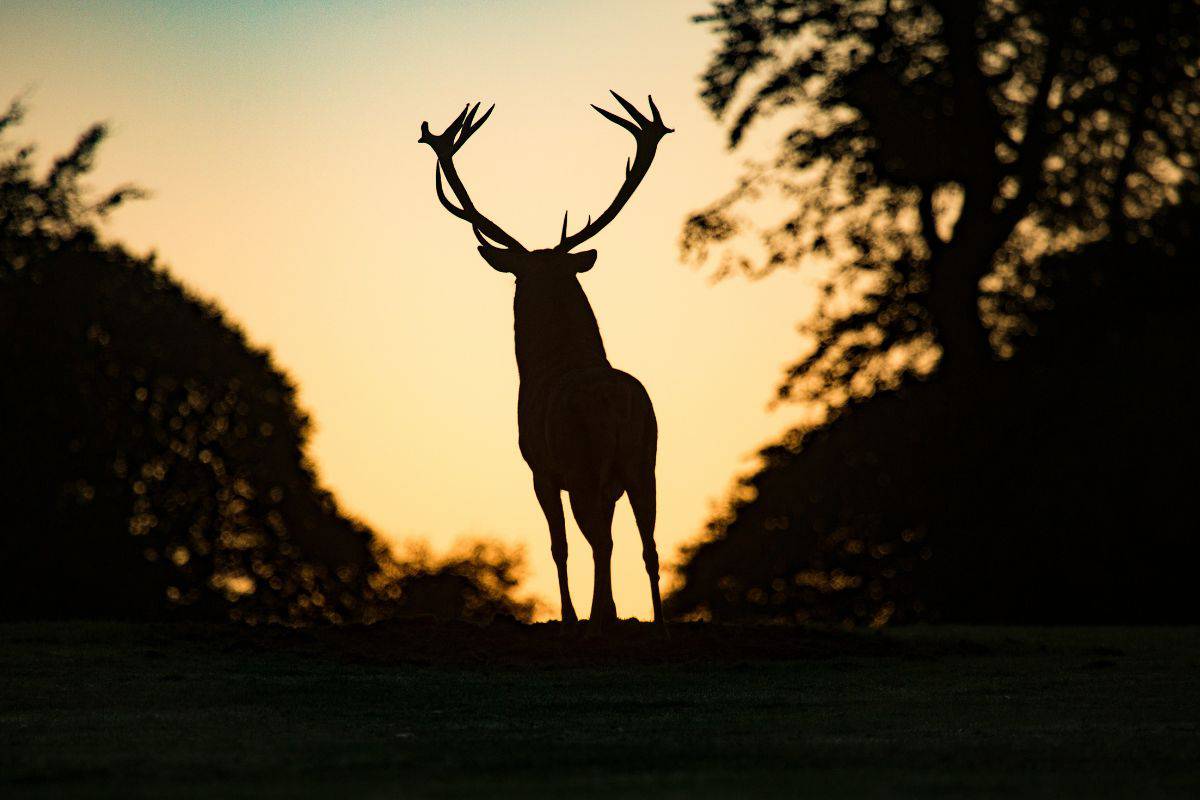If you spot a deer while on a trail, the first step is to maintain a safe distance. This is not only for your protection but also to avoid causing the animal unnecessary stress.
Deers have a keen sense of their surroundings, and getting too close could be perceived as a threat, potentially prompting them to defend themselves. Therefore, it’s best to admire them from afar without attempting to feed or touch them.
Deers are typically non-aggressive creatures that prefer to keep their distance, yet certain situations require specific actions on your part.
In the event that a deer notices you and seems uncomfortable, avoid direct eye contact, as this can be seen as confrontational.
Instead, use your peripheral vision to keep track of the animal’s movements. If a deer approaches you or shows signs of agitation, it’s advisable to slowly back away, giving the animal space to move freely without feeling cornered.
When hiking with pets, make sure they are securely leashed to prevent any interactions that could startle or provoke the wildlife you encounter.
Understanding Deer Behavior

When you encounter a deer while hiking, understanding their behavior is crucial for ensuring both your safety and that of the wild animal.
Recognize the importance of maintaining a distance and identifying deer aggression to better coexist with these creatures in nature.
Significance of Maintaining a Safe Distance
Deer, like any wild animals, require a respectful amount of space between them and humans.
It is vital for your safety and the deer’s well-being that you:
- Stay at least 30 yards away: This distance helps prevent the deer from feeling threatened.
- Avoid sudden movements: Quick actions can startle deer, potentially triggering a flight or fight response.
- Keep pets leashed: Uncontrolled pets can provoke deer, leading to unpredictable behavior.
Recognizing Aggression and Warning Signs
Understanding and recognizing deer aggression or discomfort is key to avoiding potential risks.
Here are specific warning signs:
- Stomping hooves: Deer may stomp to express distress or as a pre-charge warning.
- Laid-back ears and hair standing on end: These are signs of agitation.
- Snorting or blowing: A deer makes these sounds when alarmed.
If direct eye contact occurs, it’s usually best to avert your gaze to appear less threatening and slowly back away, thereby de-escalating any potential conflict.
Remember, your calm demeanor can significantly reduce the risk of a dangerous encounter.
What to Do When You Encounter a Deer

When you encounter a deer while hiking, the most important actions are to remain calm and unobtrusive to ensure a peaceful coexistence in the moment.
Remaining Calm and Quiet
- Stay calm: Your demeanor can influence the deer’s behavior. Take slow, deep breaths and refrain from panic.
- Keep quiet: Avoid making loud noises that may startle the deer. Speak softly if necessary.
Avoiding Direct Eye Contact and Sudden Movements
- Eye contact: Looking directly into a deer’s eyes can be perceived as a challenge. Instead, keep your gaze averted.
- Sudden movements: Move slowly and predictably. Abrupt actions can threaten a deer and provoke them.
Hiker Safety and Precautionary Measures

When hiking, your safety is paramount. To ensure a secure experience, it’s essential to take preventive measures against wildlife encounters and understand how to use defense tools effectively.
Preventive Actions to Reduce Wildlife Encounters
- Stay Aware: Always be observant of your surroundings. Use your senses to detect any wildlife activity and avoid surprising animals.
- Hike in Groups: Predators are less likely to approach larger groups, so try to hike with others whenever possible.
- Make Noise: Use your voice or a bell to announce your presence, particularly in dense vegetation or blind corners where prey might be resting.
- Keep Campsites Clean: Store food properly and maintain a clean camp to avoid attracting wildlife.
Appropriate Use of Bear Spray and Other Defense Tools
- Understand the Tool: Bear spray is a form of pepper spray that can deter attacks from large predators such as bears. Familiarize yourself with its use before your hike.
- Accessibility: Keep bear spray or any other self-defense tool in an easily accessible location, not buried in your pack.
- Practice: If possible, practice with a training canister to ensure you know how to use bear spray effectively in an emergency.
Dealing with Other Wildlife on the Trail
When you’re on a trail, encounters with wildlife like bears, mountain lions, and moose can happen.
Knowing how to handle these situations is crucial for your safety and the well-being of the animals.
Always maintain distance, carry appropriate safety gear, and educate yourself on the behavior of local wildlife.
Protocols for Bears, Mountain Lions, and Other Predators
Bears: Different species require different strategies.
- Grizzly Bears: Avoid sudden movements and do not run; you can’t outrun them. Speak calmly to signal your human presence and slowly back away without making eye contact.
- Black Bears: Be more assertive. Make yourself look bigger and make noise to intimidate the bear. Only if attacked, fight back focusing on the animal’s face and eyes.

Mountain Lions (Cougars):
- Do not turn your back or run – this can trigger a chase response. Maintain eye contact, speak firmly, and slowly create distance. If attacked, fight back, aiming to appear threatening and large.
For other large predators such as moose, bison, and mountain goats, keep a considerable distance. Never feed or attempt to touch wildlife as this can provoke aggression and creates problems for future hikers.
Preventing Tick Bites and Other Wildlife-Transmitted Diseases
Ticks can transmit diseases such as Lyme disease. Follow these precautions:
- Wear protective clothing: Long sleeves, pants tucked into socks, and hats can prevent ticks from reaching your skin.
- Use tick repellent: Apply it to both skin and clothing.
- Stay on trail: This reduces the chances of brushing up against ticks in tall grasses and brush.
After a hike, always check your entire body for ticks and remove any promptly. Be aware of other disease-carrying animals such as rodents and use proper hygiene to avoid contact with their droppings.
Snakes:
- For snakes such as rattlesnakes, stay alert, stick to trails, and avoid reaching into areas where visibility is poor.
Being informed and prepared allows you to safely enjoy your hiking experience among wildlife.
Find out 🐍 Will Snakes Cross a Rope?





